Save Money With Student Loans - 2 Simple Ways
Got student loans? Then you know how heavy the burden might feel. Know how to save thousands of dollars on student loans?
The average student currently has a debt of $29,800 as of 2018. Some have debts over $200,000, for advanced degrees.
This debt can feel like a burden, but if you owe $30,000, you could save over $10,000 on the total payoff amount.
How, you may ask? There are two main ways to lower your overall debt burden, and this knowledge could save you thousands of dollars over the life of your loan. Check out how do student loans affect your credit score?
Way 1: Increase Your Payments
If you pay an extra $100 on your student loans, you can decrease your pay down time.
If you have $30,000 in debt at 7% interest rate, and you pay $500 a month, you will take 75 months (6 years 3 months) to pay it off and pay $7,032 in interest.

However, if you have the same amount of debt, same interest rate, and you pay $600 a month, you will take 60 months (5 years) to pay it off and pay $5,573 in interest. That’s a saving of $1500 in interest costs AND debt freedom 15 months sooner than originally planned!
Can you find an extra $100/month in your budget? What can you cut out to achieve debt freedom more quickly? Getting an extra $100/month could be as simple as renegotiating car insurance or decreasing your employer’s tax withholdings (to do this, contact the HR department of your company: this is your legal right).
The more radical your payment increase, the more effective of a solution it is. If you increase it to $1000/month, you will pay it off in 34 months (less than 3 years) and pay $3,074 in interest, saving an additional $2500! Keep reading how to save thousands of dollars on student loans.
How To Do It
Call your loan provider. Ask to increase your monthly payments on your loans.

Give them several numbers that you’d like to pay. Additional $50/month, additional $100/month, or even more!
They will recalculate the loan for you, change your payoff date, and your first payment will be due the following month.
If you can’t increase your payments, don’t worry: there’s another way to save thousands on your loans.
Way 2: Refinance Your Loans
The goal with refinancing loans, if you want to save on total loan costs, is to reduce the interest rates. Depending on your credit score, you may qualify for much better interest rates than you’re currently paying (especially if you have private loans!)

To go back to our example, if you’re currently paying 7% and you lower your interest rate to 6.5%, paying $500/month on $30,000 in loans, you would save $700 in interest!
The greater your interest rate decrease, and the longer your payoff timeline, the more you save. If you’re paying 10%, and you get it down to 7%, you save over $4,000 in interest costs! We write a complete guide to mortgage refinancing, check it out.
How To Do It
Student loan refinancing for federal student loans can be done over the phone, just by calling your provider.
For private loans, however, you’ll need to go through another company. Most private lenders will not refinance loans, but other companies will gladly do it for you.

Lenders that will refinance student loans include SoFi Financial, LendKey, and Education Loan Finance.
Student loans can be a major burden on you, and it’s up to you to decide how long you want to continue to be in debt. The unfortunate truth is, if you want to be in a better position later on in life, you’re going to want to pay down your debt more quickly.
The Credit Pros blog talks about various methods you can use to save money and improve your credit to make sure you don’t have to pay more than you need to.



